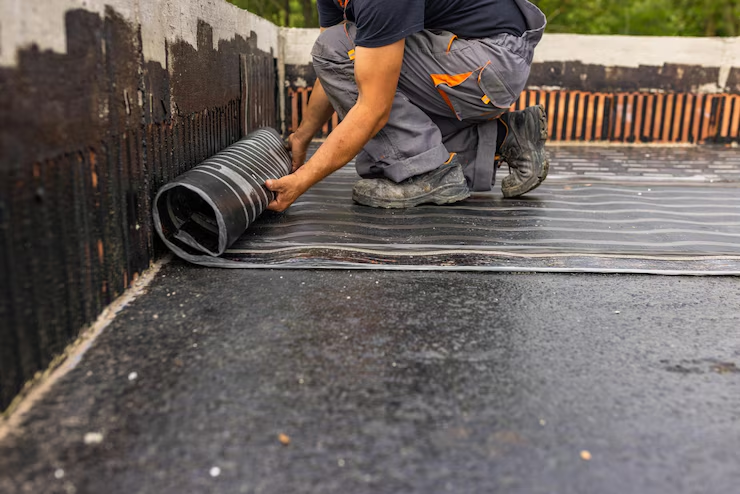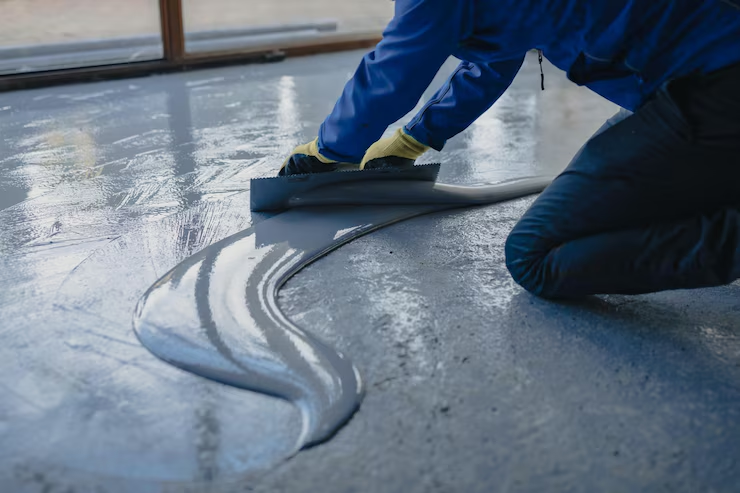Insulation project Ten questions to ask before planning are critical to a successful project. Every structure should be protected by a long-lasting and efficient insulation system. However, improper planning can lead to significant losses in both cost and performance. Therefore, every step should be planned with deliberate planning. Asking the right questions before the project begins prevents errors and ensures a return on investment.
Insulation projects are not limited to material selection. Accurate analysis, proper surface preparation, adaptation to climatic conditions, and professional application are also integral parts of the process. All these details determine the lifespan of the project. Without proper planning, even the highest quality products will fail to deliver the expected performance.
1. What is the Project Purpose and What Problems Are Wanted to Be Solved?
The first step in any insulation project is to clearly define the requirements. Every building is located in different environmental conditions and has different requirements. For example, waterproofing, heat insulation or sound insulation The goal may be different in areas such as: Once the goal is defined, choosing the right product and technique becomes easier.
While energy efficiency is a priority in some projects, moisture or water insulation is a priority in others. Structural analysis is crucial at this stage. The climate conditions, solar orientation, and soil characteristics of the building's location should be evaluated. New generation insulation solutions with Sempoly productsoffers a wide range of options for different needs.
Moving forward without a clear goal can lead to poor material selection and short-lived results. However, a clear project objective establishes a solid foundation for the implementation strategy, ensuring the investment is long-term.
2. What is the performance of the materials used in insulation?
The choice of insulation material directly impacts the success of a project. Not every material performs equally well under the same conditions. For example, polyurethane and polyurea-based systems offer effective solutions in areas requiring high durability. However, if the material's UV resistance is low, it will deteriorate over time in open areas. Therefore, Why is UV resistance important in polyurethane insulation systems? The answer to the question is very valuable.
The material's flexibility, waterproofing, heat resistance, and adhesion to the surface should be tested. The product's environmental friendliness should also be examined. Sustainable materials reduce maintenance costs in the long run.
Sempoly's new-generation coating systems offer high performance and long life, ensuring investment value is preserved. However, it's always best to contact the manufacturer before making a product selection. Sympoly Contact You can get technical consultancy via the page.
3. How Should the Application Area Be Prepared in the Insulation Project?
In insulation applications, surface preparation is as important as material quality. Improper surface preparation can degrade the performance of even the most durable coating. First, the surface must be clean, dry, and smooth. Any dirt, oil, dust, or loose particles must be completely removed.
The surface structure determines the material's adhesion. Moisture levels should be measured on concrete surfaces and a primer applied if necessary. Otherwise, the material may swell or peel. Furthermore, detail points should be determined in advance, and corner joints should be carefully crafted.
Insulation systems must be resistant to water pressure, especially in areas such as pools or water tanks. In this case, Coating systems for long-lasting waterproofing in pools These systems provide superior performance in terms of both durability and aesthetics.
Applications performed without proper surface preparation can lead to premature wear. Therefore, the application surface should be inspected by professionals during the planning phase.
4. How should climate and environmental conditions be evaluated in the project?
Environmental factors must be carefully considered in every insulation project. Factors such as temperature, humidity, wind, and solar radiation can affect the success of the application. If the temperature is too low during application, the material may not fully adhere to the surface. If the humidity is high, problems such as swelling or peeling may occur.
Therefore, professional application teams take weather forecasts into account when planning projects. Furthermore, the temperature and humidity values specified in the material manufacturer's technical data sheets should be taken into account. This information is often the most important guide in determining application success.
The location of the insulation area should also be considered. Systems with high UV resistance should be preferred in open areas. However, this feature is less important in shaded areas. Therefore, the intended use should always be a determining factor in material selection.
Failure to conduct a proper climate analysis will shorten the life of the pavement. This will also increase repair and maintenance costs. Therefore, detailed analysis of climate conditions is essential during project planning.
5. How Should the Post-Implementation Maintenance and Control Process Be Conducted?
The process isn't complete once the insulation application is complete. The most crucial step is post-application inspection and maintenance. During this phase, the surface must be inspected regularly, as even a small crack or bulge can lead to water leakage.
A maintenance plan should be established, and the system's condition should be reviewed at each seasonal change. Drainage systems, especially in waterproofed areas, should be checked. Furthermore, maintenance should be performed regularly, not just when problems occur.
Sempoly's innovative insulation systems minimize maintenance. However, for long-lasting performance, periodic professional inspections are recommended. These inspections identify potential risks at an early stage.
Systems without regular maintenance will experience performance loss over time. Therefore, post-implementation maintenance should be included in the planning process. To obtain expert support Sympoly Contact You can easily request information via the page.
Every insulation project should be guided by the right questions during the planning phase. This approach ensures both technical success and long-term efficiency. If professional support is sought and every stage of the process is carefully executed, insulation systems will provide effective protection for decades. Learn more Sempoly You can review all product groups and technical documents by visiting the official website.
6. How Experienced Is the Implementation Team?
The success of an insulation project depends not only on the quality of the materials. The experience of the installation team is equally important. An experienced team applies the correct techniques at every stage, from surface preparation to topcoat application. Furthermore, they fully comply with occupational safety and quality standards.
When selecting an implementation team, reference projects must be reviewed. Furthermore, it's important to ask whether the products used were applied in accordance with the manufacturer's recommendations. This is particularly important. New generation insulation solutions with Sempoly products It plays a critical role in high-performance systems such as.
Inexperienced teams may mix the material incorrectly or apply it incorrectly to the surface, causing the entire investment to be wasted. However, trained personnel understand the material's properties and achieve optimal performance.
It's also beneficial to get support from the manufacturer's technical team during implementation. This support prevents potential errors and ensures the project progresses safely.
7. What is the warranty period for the materials used in the project?
An insulation project must protect not only the present but also the future. Therefore, the warranty period for the material used is of paramount importance. Quality brands offer long-term warranties on their products. This guarantee ensures that the material will maintain its performance under specific conditions.
When reviewing the warranty, it's crucial to understand the conditions under which it applies. Some materials are only covered under certain temperature or humidity conditions. Therefore, manufacturer documentation should be carefully reviewed.
The systems developed by Sempoly stand out with their high durability and long warranty periods. UV resistance in polyurethane insulation systems Thanks to this, the material is not affected by sunlight and provides long-lasting protection.
The warranty period is a key element in ensuring investment security. This ensures the project's economic value is maintained and maintenance costs are reduced.
8. How Should Environmental Impact and Sustainability Be Addressed in the Project?
Sustainability is now a necessity in modern insulation projects. Environmentally friendly materials both protect the environment and increase energy efficiency. Therefore, environmental impact must be considered during project planning.
Sustainable products reduce the building's carbon footprint and improve its overall energy performance. Furthermore, because these products have a long lifespan, they reduce maintenance frequency, providing both economic and environmental benefits.
Sempoly's innovative products stand out with their environmentally friendly formulations. These systems contain no harmful chemicals and protect user health. Learn more Sempoly's official website Technical documentation can be reviewed via.
Failure to consider the environmental impact of an insulation project will increase costs in the long run. Buildings with high energy losses require constant maintenance and repair. Therefore, sustainability should be at the core of planning.
9. How Should the Project Process Be Tracked and Documented?
Traceability is the foundation of quality control in insulation projects. Documentation is essential for every stage of the project. This documentation is essential for both quality management and warranty processes.
During the installation, measurements, material consumption, weather conditions, and labor details should be recorded. This allows for retrospective review of potential problems. Furthermore, these records provide an important reference for future projects.
Digital project management systems streamline this process. The implementation team can regularly document progress with photos and reports. This method allows for early detection of errors.
It becomes difficult to identify the source of problems in undocumented projects. Therefore, a reporting procedure must be defined during the planning phase. For technical control Sympoly Contact You can get expert support via the page.
10. What Types of Tests Should Be Conducted for Long-Term Performance?
Testing processes are essential for measuring system performance in insulation projects. After installation, the material's durability should be verified through various tests. These include water resistance, adhesion strength, and UV resistance.
Thermal imaging analysis is also used in some projects. This method helps visually detect heat loss. Furthermore, the test results can guide future maintenance planning.
Sempoly's product lines are laboratory-tested to high standards. These systems demonstrate long-term durability even in diverse climatic conditions. Measuring UV resistance is particularly critical in outdoor applications.
Regularly testing insulation systems helps identify potential risks early. This reduces maintenance costs and extends system life. Recording test results is part of the quality assurance process.


